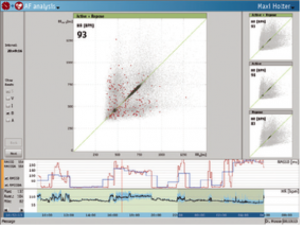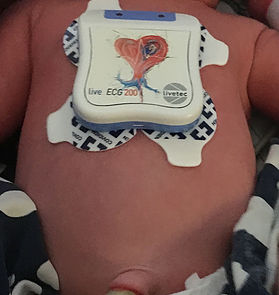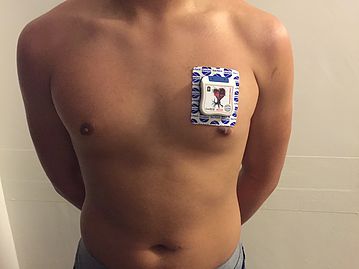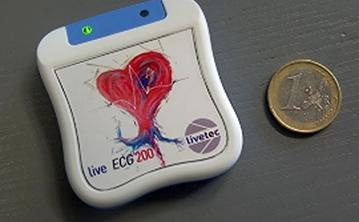Cable Free ECG Holter – Recording up to 60 Day’s
Innovation in ambulatory ECG recording;
The use of cutting edge technologies allowed an extremely small Holter recorder to be developed that weighs a mere 38 grams (including a rechargeable or non-rechargeable battery) The built-in data memory allows a 3-lead ECG recording for up to 60 days, no need for an implantable device anymore.The Holter records 3 ECG leads via 4 recording points on a single patch electrode.The new Holter recorder with patch electrode sets new standards in ambulatory ECG recording. Because it has no patient cable and uses just one patch electrode, application of the LiveECG Holter recorder is easy.
Ideal for diagnosing syncope and atrial fibrillation (storage capacity of up to 60 days)
Innovation in atrial fibrillation diagnosis The fact that the Holter offers up to 15 days of recording with just one battery and a storage capacity of up to 60 days ensures the best possible chances of detecting phases of paroxysmal atrial fibrillation and syncope. A special PADSY module has been developed to display atrial fibrillation; it uses Poincaré plots to show even atrial fibrillation phases lasting just 10 seconds
High patient comfort due to the user friendly design, when designing the Holter concept, particular attention was given to making the Holter recorder as easy as possible to use and as comfortable as possible to wear. The outcome is the LiveECG recorder. Its compact dimensions, low weight and absence of patient cable mean that patients hardly notice that they are wearing the recorder. Interruptions to the ECG recording due to battery replacement or attachment of a new patch electrode (e.g. after a shower) are no problem with the LiveECG recorder. ECG recording begins the moment an operational rechargeable or non-rechargeable battery is connected to the recorder. This noticeably reduces stress for the patient and therefore increases acceptance of ambulatory ECG monitoring.
A worthwhile investment the design of the LiveECG recorder aimed to achieve the lowest possible operating costs and costs for consumables. Patch electrodes are easier to use and no more expensive than standard gel electrodes. Patient cables have a limited lifetime and need to be replaced from time to time. As the Holter uses no patient cables, this is not necessary, nor is there any need to clean and disinfect patient cables or the recorder bag. The recorded ECG data are quickly transferred to a PC via the LiveECG interface and are ready for analysis. There is no need to remove and replace a memory card, which also saves time and money.
Technical data
Livetec Holter Technical Specifications / Technical parameters
- 3 leads: I,II,III
- ADC resolution:24bit
- Sampling rate:250 Samples/sec
- integrated filters and signal processing
- Frequency bandwidth: 0.1(0.05)Hz -75Hz
- Input voltage range: < 40mV
- ECG storage capacity :up to 60days
- interfaces for fast data analysis and signal control (USB Bluetooth)
- CE approval: Class IIa product
Battery/accumulator:
- Live ECG B200: battery for 8 days recording
- Live ECG ACCU: rechargeable battery for 3 days
Reusable parts:
- LiveECG recorder module
- LiveECG Reader (USB)
- LiveECG ACCU
- LiveECG Charger
Disposable parts:
- Live Electrode PATCH
- LiveECG B200
Mechanical dimensions:
- Small size: 55 x 50 x 11mm weight: < 35grams
- Made in Germany
PADSY Analysis Software
Valid results “at first glance”
Following the initial download of data from the Holter device,PADSY analyses the ECG in the blink of an eye and presents the HR variability and all detected arrhythmias according to type and frequency for the entire recording, over a period of up to 48 hours. After just a few seconds you can assess your patient’s heart rhythm status. Of course, you can zoom in on the ECG of any detected event at the click of a mouse. If you should ever be unsatisfied with the beat detection of the powerful PADSY algorithm, efficient tools are available in all the screen views which will allow you to conveniently edit individual beats and entire beat classes.
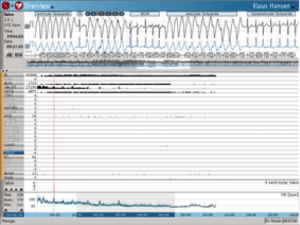
A new ECG perspective
The different complex forms of all beat classes which appear are visualized by PADSY using its template analysis. This means that the correct allocation of the beat classes from a 48 hour recording can be checked and, if necessary, corrected in a single work step. A unique feature is the “waterfall presentation” which clearly and precisely displays each ECG beat in a beat class, like on a string of beats.
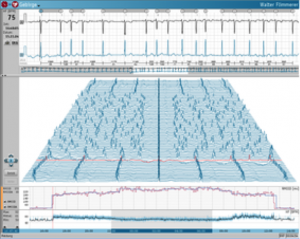
Versatile pacemaker analysis
PADSY offers precise analysis functions for evaluating pacemaker spikes recorded by 2- or 3-channel ECG recorders. The pacemaker overview already presents you with an overview of the basic pacemaker functions. A histogram allows a detailed time analysis of each individual pacemaker class with direct editing options. The effects of the programmed pacemaker parameters can be quickly, specifically and precisely analysed and monitored via the class definition and pacemaker reanalysis.
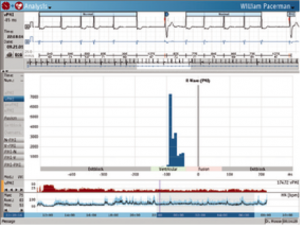
Atrial fibrillation – an underestimated risk
It is estimated that six million people in Europe suffer from atrial fibrillation. It is therefore important to reliably detect atrial fibrillation at a very early stage in your patients and, in the event of any risk, to take counteraction before a dangerous thrombosis develops. Armed with the PADSY Atrial Fibrillation Diagnosis module, you have the right tool to hand to reliably detect any atrial fibrillation phases which may be present
